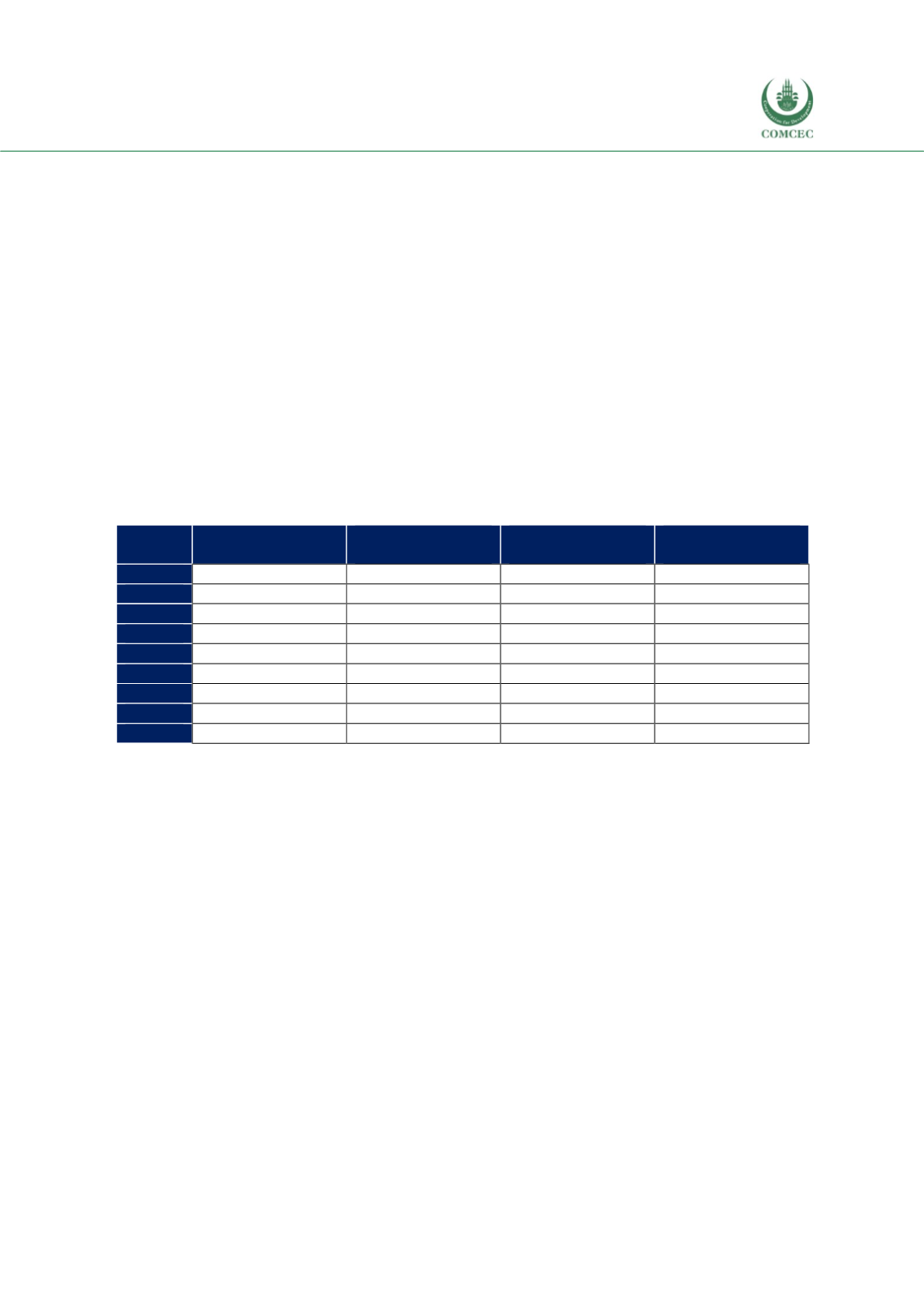

Reviewing Agricultural Trade Policies
To Promote Intra-OIC Agricultural Trade
137
4.5. Thailand
Thailand has moved up from a low-income to an upper-middle income status in less than a
generation, and has been an upper-middle income country since 2011, with a GDP of 455 billion
USD and per capita income of USD 5,960 in 2017, Thailand ranks the 20
th
in GDP (PPP) among a
total of 230 countries. Thailand’s economy reached a growth rate of 3.9 percent in 2017, the
highest since 2012, versus an estimated 3.0 percent of the global economy and 4.3 percent of
emerging markets and developing economies. The high growth in 2017 was realized largely by
a rapid export growth at the rate of 7.5 percent. Inflation in the country is low: At 0.7 percent in
2017, it remained even below the target range of 1-4 percent.
In 2017, agricultural sector in Thailand grew by 6.2 percent, fully recovering from the severe
drought in 2015. This growth helped offset negative effects of the fall in agricultural prices
amounting to 2.7 percent, driven by rubber and oil palm price decline. The production growth
has been especially important in rice paddy (6.5 percent) and sugarcane (16 percent), and
agricultural farm income grew by 3.4 percent during 2017 (WP Thailand, 2018). The growth in
agricultural sector is expected to continue in the future.
Table 4. 46 Share of Agriculture in GDP, Employment and Trade, Thailand
Year
% share in GDP
% share in
employment
% share in
exports
% share in
imports
2008
10.1
42.5
17.1
6.1
2009
9.8
39.0
17.4
6.9
2010
10.5
38.2
17.2
6.4
2011
11.6
41.0
19.9
6.5
2012
11.5
42.1
17.9
6.8
2013
11.3
39.6
17.3
6.6
2014
10.1
33.4
16.9
7.2
2015
9.0
32.3
15.8
7.6
2016
8.5
33.3
15.5
8.3
Source: CEPII BACI, Eurostat RAMON, World Bank, UN Comtrade, UN Trade Statistics, and authors’
calculations
Table 4.46 presents the relative importance of agricultural sector in Thailand for the period of
2008-2016. The share of agriculture in GDP declined from 10.1 percent to 8.5 percent, as the
share of agricultural sector in employment fell from 42.5 percent to 33.3 percent. The share of
agricultural sector in exports reduced slightly from17.1 percent to 15.5 percent, while the share
of agricultural imports increased from 6.1 percent to 8.3 percent in the same period. Despite
falling shares of agriculture, it remained a major source of income for Thai households.
Thailand introduced a 20-Year National Strategy aiming to become a high income country by the
year 2038. Although the strategy entered into force in October 2018, its goals had been taking
shape in the preceding years, as revealed by the increasing shares of manufacturing and service
sectors. Likewise, the fall in the share of agriculture can be viewed as one of the early results of
the envisioned transformation of the Thai economy.
Concerning international trade links, Thailand is a founding member of ASEAN and has strong
trade relations with the member countries. In terms of trade balance, Thailand has a surplus
both in its overall trade and in agriculture. As of 2016, agricultural exports worth 37 billion USD
led to the considerable agricultural trade surplus of 22 billion USD (see Figure 4.49).
A look at the decomposition of agricultural exports by subgroups indicates the following:
















